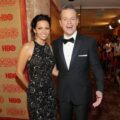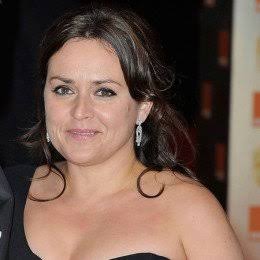Luciana Paluzzi Biography
Luciana Paluzzi is an Italian American actress. She is best known for playing SPECTRE assassin Fiona Volpe in the fourth James Bond film, Thunderball.
Luciana Paluzzi Age
She was born on 10 June 1937 in Rome, Italy (She is 81 years as of 2018)
Luciana Paluzzi Height
She stands at a height of 1.67m
luciana paluzzi photoLuciana Paluzzi Net Worth
She has an estimated net worth of $2 Million
Luciana Paluzzi Parents
She was born to Manlio Paoluzzi (a colonel father in the Italian army )and Maria Rota Paoluzzi (a mistress mother of Benito Mussolini, leader of Fascist Italy)
Luciana Paluzzi Husband
She is married to Michael Solomon, and they have one child.
Luciana Paluzzi Children
She has one child Christian Halsey Solomon
Luciana Paluzzi Education
She studied naval engineering for two years at the Scientific Academy of Milan and she was the only lady, She later graduated from high school, Rome.
Luciana Paluzzi Career
Her first role was an uncredited walk-on part in Three Coins in the Fountain, which she got by chance when during a visit in Rome through friend of her father, who was invited at her family’s for dinner and happened to be looking for a young actress doing a very short two-line role for director Jean Negulesco, thinking Paluzzi might be a fit. She got the role from the English she spoke. She went on to appear in many movies, in which most of them were made in her native Italy.
She went to Hollywood under contract with Twentieth Century Fox Television to star as regular in the TV series Five Fingers, which however got canceled after three months. She was cast as SPECTRE villainess. She had auditioned for the part of the lead Bond girl, Dominetta “Domino” Petacchi, but producers instead cast Claudine Auger, changing the characters name from an Italian to a Frenchwoman, renaming her Dominique Derval. Initially crestfallen when informed she did not get the part, Paluzzi rejoiced when told her consolatory prize was the part of Volpe, which she said was “more fun” to play.
She expressed amazement at the level of fame, publicity, and recognition she received from Thunderball; but as a result of being in such an outlandish film, she felt she was taken less seriously as an actress when returning to the Italian film industry.
Luciana Paluzzi movies
- Thunderball
- The Green Slime
- Chuka
- 99Women
- Muscle Beach Party
- The Sensuous
- Black Gunn
- Captain Nemo
- Carlton Browne
- The Forgotten Pistolero
Luciana Paluzzi Twitter
Luciana Paluzzi Interview
Luciana Paluzzi Latest News
Walking into Oakland’s grand Paramount Theatre on Friday, Nov. 30, will be like stepping back into time, 53 years ago to be exact, when the British invasion was in full force and Bond mania was at its height.
The always well-attended Paramount’s classics series is showing “Thunderball” (8 p.m.), perhaps Sean Connery’s finest hour as British Secret Service agent James Bond.
The 1965 spy thriller was the third-highest-grossing movie of the year, behind “The Sound of Music” and “Doctor Zhivago”; has sold more theatrical tickets than any 007 film, and in adjusted dollars was the highest-grossing Bond film until 2012’s “Skyfall.”
Author Ian Fleming’s James Bond was introduced on film in 1962’s “Dr. No.” Both that movie and the next year’s follow-up, “From Russia With Love,” were relatively low-budget films aimed to gain a foothold in Britain, where the films were big hits right out of the gate, and start the ball rolling in the United States, where business was initially slow but steady. The third film, “Goldfinger,” with a bigger budget and location filming in the U.S. for the first time, was specifically designed to cross over to the American audience — and it did.
That year, 1964, the British invasion became a thing in America. The Beatles made their U.S. debut on “The Ed Sullivan Show” in February, while British tastes in fashion (the miniskirt and hot pants have been credited to London designer Mary Quant) and popular culture took hold in the American imagination. Places such as King’s Road in Chelsea and London’s West End; names such as Twiggy, Jean Shrimpton, Penelope Tree, David Bailey, Mick Jagger, Roger Daltrey, George Best, Michael Caine and Terence Stamp; and films such as “Blow-Up,” “Alfie,” “Darling,” “Georgy Girl” and “The Knack … and How to Get It” all became part of the Swinging Sixties lore.
“Goldfinger,” with its distinctive villains (who can forget Oddjob?), Shirley Bassey theme song and a Bond girl named Pussy Galore became the first breakout Bond hit in the U.S., making Connery a global superstar, giving new monetary life to Fleming’s novels, and spawning a line of best-selling toys such as action figures, board games and one of the most essential toys of the 1960s: Corgi’s incredibly detailed Aston Martin (Bond’s tricked-out car) complete with working ejector seat.
With this success, producers Albert R. Broccoli and Harry Saltzman set out to make “Thunderball” the biggest Bond ever. Two problems with “Goldfinger,” in their view, were the setting (mostly Kentucky) and the lack of action: For the entire second half of the film, Bond is Goldfinger’s prisoner.
That all changes in “Thunderball,” the first Bond film to be shot in the epic widescreen format. No one stops at a Kentucky Fried Chicken here; this film will have an exotic location (Nassau, the Bahamas), a nuclear nightmare plot and wall-to-wall action, from an opening escape by the jet pack to a massive cast-of-dozens fight both underwater and above the ocean surface.
And to take advantage of Connery’s new stardom, the producers and director Terence Young emphasized his machismo. Connery goes shirtless here in more than any of his seven appearances as 007; there are more Bond girls, and no way is Bond going to be captured — he is, unquestionably, in total command.
Those were different times, of course. Whereas most Hollywood movies are now made in near-total secrecy, producers of big-budget films in the 1960s welcomed press coverage, knowing it could help box-office success. United Artists flew in journalists by the planeloads to the Bahamas during location filming. Celebrities such as Ringo Starr visited. Sullivan taped the opening of his next season from the set. And Bond fans and tourists packed the hotels, hoping to catch a glimpse of filming or even Connery himself.
United Artists provided Connery with an entourage of bodyguards, and he needed them. Years later, when an interviewer pointed out that in the 1960s Bond was as popular as the Beatles, Connery groused, “Yes, but there were four of them and only one of me.” One press report from the “Thunderball” set noted “more than 200 young fans treading water just out of camera range around his boat. ‘Speak to us,’ one of the bold ones shouted. ‘You’re our leader, and we’re your people.’ ”
“Thunderball” proved to be a worldwide blockbuster, and arguably Connery’s best turn as Bond (purists might go with “From Russia With Love”). It is here, with the fourth film, that Connery found that perfect mix of 007’s toughness and humor, something he never quite captured again as he tired of the role.
Most people recognize Daniel Craig as the best Bond since Connery — and maybe the best ever. His films have certainly revitalized a series that had been foundering.
Craig’s films are terrific, but “Thunderball” is a reminder of just how fun Bond films can be. Perhaps the best scene to illustrate that balance between coldhearted toughness and joy is when Bond is tracked down to an outdoor dance club by villain Fiona Volpe (Luciana Paluzzi) and her cadre of henchmen. She goes to dance with him, hoping to maneuver him into a position where he can be shot and killed by a henchman hiding behind a curtain.
Instead, spotting the gun at the last moment, Bond twirls her around and she takes the bullet. Carefully hiding the bullet wound with her scarf, he maneuvers her body into an empty chair at a table occupied by a partying couple.
“Mind if my friend sits this one out?” Bond asks. “She’s just dead.”
About InformationCradle Editorial Staff
This Article is produced by InformationCradle Editorial Staff which is a team of expert writers and editors led by Josphat Gachie and trusted by millions of readers worldwide.
We endeavor to keep our content True, Accurate, Correct, Original and Up to Date. For complain, correction or an update, please send us an email to informationcradle@gmail.com. We promise to take corrective measures to the best of our abilities.






